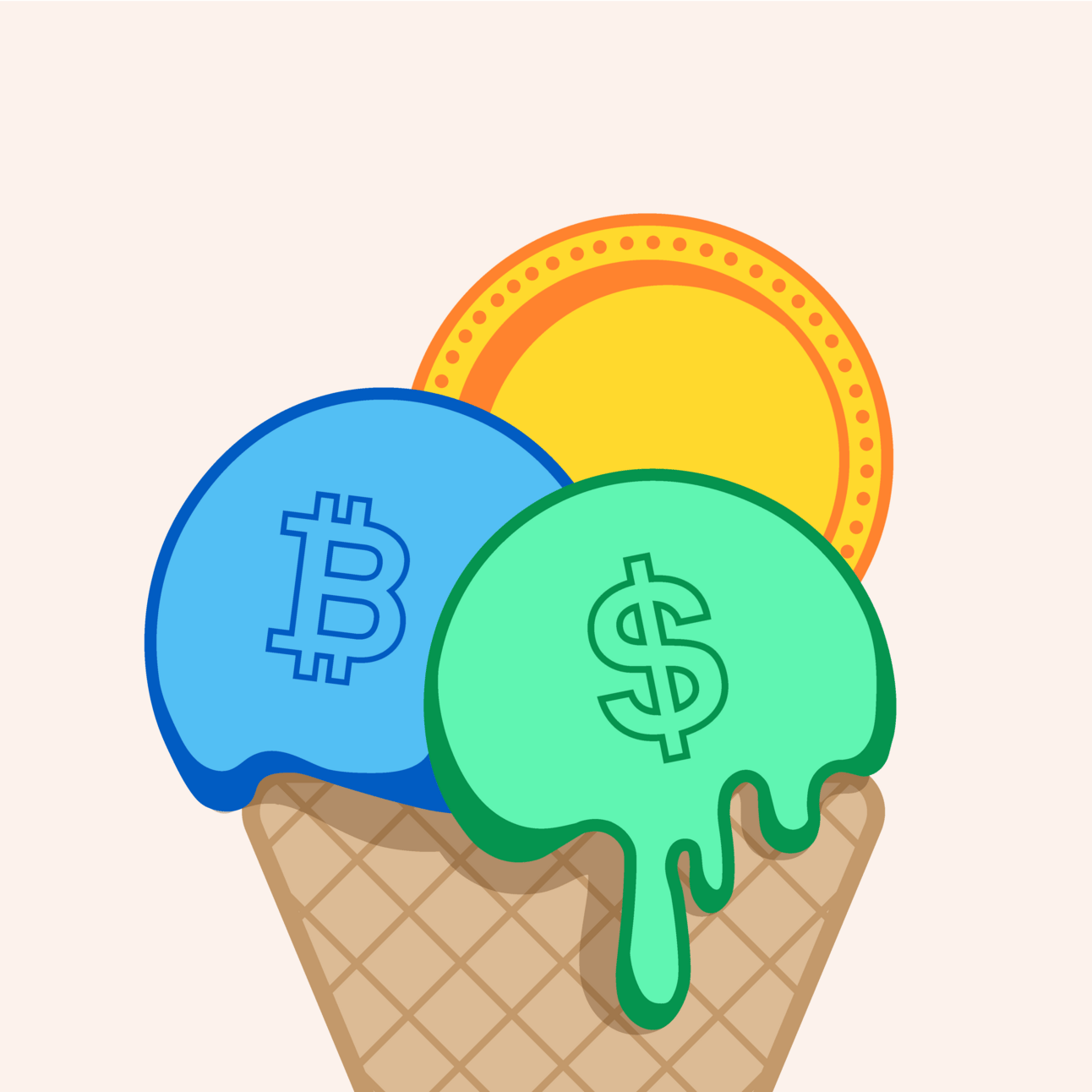- 3 Big Scoops
- Posts
- Microsoft Overtakes Apple
Microsoft Overtakes Apple
PLUS: U.S. government debt widens
Bulls, Bitcoin, & Beyond

Market Moves Yesterday
S&P 500 @ 4,780.24 ( ⬇️ 0.067%)
Nasdaq Composite @ 14,970.18 ( ⬆️ 0.0036%)
Bitcoin @ $45,694.91 ( ⬇️ 1.19%)
Hey Scoopers,
Happy Friday! We’ve got an exciting newsletter to kickstart your day. Here’s what’s going on 👇
👉 Microsoft surpasses Apple
👉 U.S. deficit tops $34 trillion
👉 What next for Bitcoin?
So, let’s go 🚀
Microsoft Firing On All Cylinders
Yesterday, Microsoft briefly overtook Apple as the world’s most valuable company for the first time since 2021. While Apple shares are down over 6% from all-time highs, Microsoft touched a new high on Thursday, valuing the latter at $2.86 trillion by market cap.

Analysts have raised concerns over Apple’s slowing iPhone demand in key markets like China.
Alternatively, Microsoft’s big-ticket investment in Open AI gives it an early-mover advantage in the generative artificial intelligence segment.
Since the start of 2023, Microsoft shares have gained 60%, while Apple stock is up 42%. It was inevitable that Microsoft would overtake Apple since the former is growing at a much faster pace and has more upside from the generative AI revolution.

Microsoft has integrated OpenAI’s path-breaking tech across its productivity software suite, helping it spark a rebound in the cloud business in the September quarter.
Meanwhile, Apple has been wrestling with weak demand across product categories such as the iPhone, MacBook, and wearables.
China, a key revenue driver for Apple in the past decade, could now be a drag on Apple’s performance in the next few years due to slowing GDP growth and rising market share among domestic smartphone manufacturers.
Since the start of 2024, three of the 41 analysts covering Apple have lowered their ratings.
U.S. Government Debt Increases By $500 Billion
The U.S. government debt grew by over $500 billion in the December quarter. In the month of December, the shortfall stood at $129.4 billion, an increase of 52% year over year.
At the current pace, the budget deficit for fiscal 2024 could widen to $2.3 trillion.
In fiscal 2023 (ended in September), the country’s deficit rose by $1.7 trillion. The uptick in the budget deficit has pushed total government debt past $34 trillion.

The deficit has piled up despite assurances from the government that the Inflation Reduction Act will reduce prices and shave off billions of dollars in deficits.
While inflation has cooled off, the consumer price index for December rose 3.4%, much higher than the Fed’s goal of 2%.
The Fed has increased interest rates to offset inflation. But it has also meant financing costs for the government totaled $660 billion in 2023. Debt as a percentage of GDP also rose to 120% in Q3 of 2023.
What Next for Bitcoin?
Now that the SEC has approved 11 spot Bitcoin ETFs, smart money is expected to flow at an accelerated pace toward the digital asset in the upcoming decade.
Bitcoin Price Forecast According to the Stock-to-Flow Ratio

But what should investors expect from Bitcoin in the near term? One way to predict the value of Bitcoin is by using the stock-to-flow ratio, which has been eerily accurate historically.
According to the ratio, BTC prices will trade around $55,000 by the end of April 2024 and might surpass $500,000 in Q4 of 2025, valuing the world’s largest cryptocurrency at $11 trillion by market cap.
Headlines You Can’t Miss!
Oil prices jump 2% as Britain attacks Houthi rebels
China’s annual exports drop for the first time since 2016
U.S. inflation data drives Treasury Yields higher
JPMorgan to report Q4 results today
Bitcoin ETFs attract over $2.6 billion
Chart of The Day

US prices rose at a hotter-than-expected 3.4% in December – considerably warmer than November’s 3.1% pace.
But let’s ignore the short-term inflation data and concentrate on the bigger picture. Though the consumer price index (CPI) has calmed down in the past 12 months (it was 6.5% this time last year), prices are still way up – a far cry from their pre-pandemic wallet-friendlier days.
Inflation’s been slowing down, but that doesn’t mean prices have all been falling. They’re mostly just rising at a slower pace. And because they’ve been on an upward climb for a while, they’re plateauing at a much steeper altitude than a few years back.
For consumers, this matters. Sure, they’ve probably had some pay raises – the job market’s been remarkably strong, but it hasn’t kept pace with price increases.
The result is that most folks are feeling the financial squeeze, especially those on the lower rungs of the income ladder. Now, don't get it twisted: wallets haven't snapped shut.
Thanks to some nifty pandemic savings, a resilient labor market, and a little tap-tap of the credit card, spending's still going strong. But in terms of mood, it's not exactly party vibes: a cloud of worry is hanging over consumers.
Looking ahead, we're straddling a fine line with two very different futures. Scenario one: the economy hits a rough patch, jobs start to vanish, savings dry up, house and stock values dip, and consumers slam their wallets shut.
It’s a recipe for a bigger-than-expected slowdown. Scenario two: wages start outpacing inflation, people feel their wallets become heavier, consumers adjust to the new price tags, and voilà – sentiment gets a sunny makeover, giving the economy a rosy boost.
The longer inflation remains high – or worse, the longer it continues to climb – the more likely that first scenario becomes. In any case, be prepared for the unexpected.
DISCLAIMER: None of this is financial advice. This newsletter is strictly educational and is not investment advice or a solicitation to buy or sell assets or make financial decisions. Please be careful and do your own research.